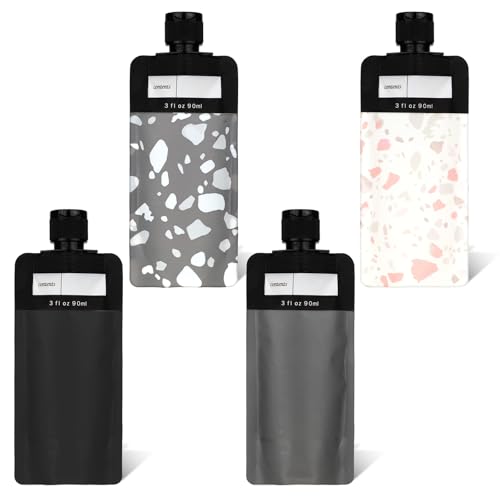Squeeze Pouches: An Introduction
Squeeze pouches, also known as baby food pouches or food pouches, have gained immense popularity in recent years. These convenient and portable containers are not just limited to baby food, but are also used for storing a variety of food products like smoothies, purees, sauces, and yogurts. However, have you ever wondered what these pouches are made of? In this article, we will delve into the materials used to make squeeze pouches.
Food-Grade Plastic: The Main Component
The main material used in the production of squeeze pouches is food-grade plastic. This plastic is specifically designed to be safe for storing food and beverages. Polyethylene terephthalate (PET) and high-density polyethylene (HDPE) are the two most common types of plastics used in the manufacturing of squeeze pouches.
PET is commonly used for packaging water and carbonated beverages, while HDPE is typically utilized for storing milk, juice, and other liquid foods. These types of plastic are chosen for their safety, durability, and ability to preserve the freshness of the food inside the pouch.
The Inner Layer: Making It Leak-Proof
In order to ensure that the squeeze pouches are leak-proof, an inner layer is added to the food-grade plastic. This inner layer is usually made of aluminum or a biodegradable material like polylactic acid (PLA), which is derived from renewable resources such as cornstarch or sugarcane.
The addition of this inner layer not only prevents leaks but also helps in preserving the taste and quality of the food by protecting it from external elements. The inner layer acts as a barrier against moisture, oxygen, and light, thereby extending the shelf life of the contents inside the squeeze pouch.
Caps and Spouts: Encountering Convenience
Squeeze pouches also feature caps and spouts that make it easy to consume the food or drink inside. These components are typically made of polypropylene, a widely used plastic known for its durability and safety.
Polypropylene is resistant to heat and chemicals, making it a suitable choice for caps and spouts. It also has good mechanical properties, which ensure that the caps and spouts are secure and prevent any leakage once the pouch is filled.
The Environmental Factor: Biodegradable Options
With the increasing concern for the environment, some manufacturers have started offering squeeze pouches made from biodegradable materials. Biodegradable pouches are made from materials such as paper or plant-based plastics like PLA.
These materials are chosen as they can break down naturally over time, reducing the impact on the environment. However, it is important to note that not all biodegradable pouches are compostable, so proper disposal methods should be followed to ensure they are disposed of correctly.
Squeeze pouches are made primarily from food-grade plastic, such as PET and HDPE, which ensures the safety and freshness of the stored food or beverage. The addition of an inner layer made of aluminum or biodegradable materials like PLA helps in making the pouches leak-proof and preserving the quality of the contents. The caps and spouts, usually made of polypropylene, contribute to the convenience of consuming the contents. Additionally, some manufacturers are now offering biodegradable squeeze pouches made from materials like paper or PLA to reduce the environmental impact.






